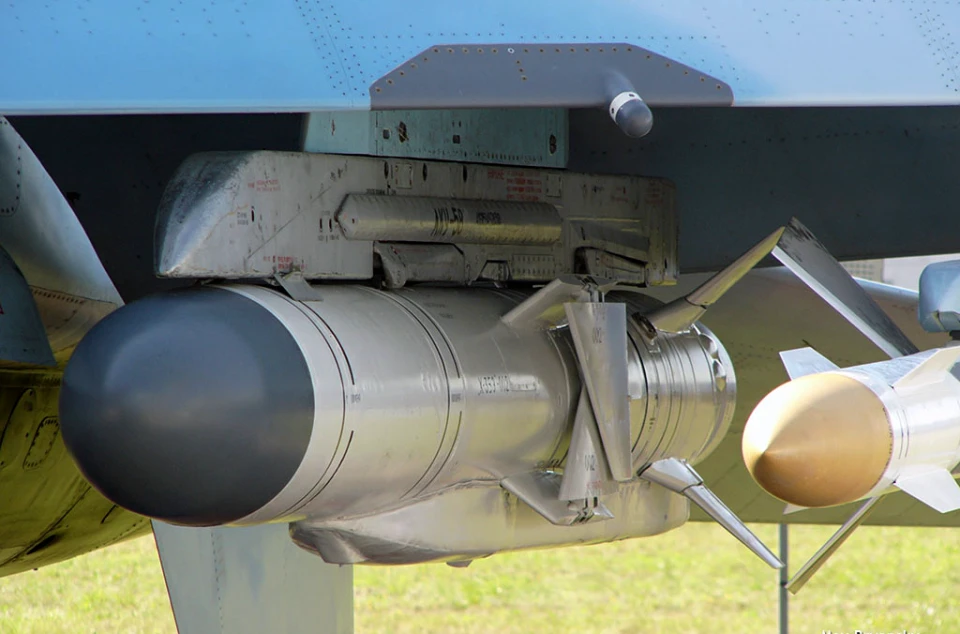
Low accuracy, inevitable civilian casualties: what are Kh-35U missiles Russia used to strike Kharkiv?
Reports of Russian attacks on Kharkiv are frequent, but on July 28, the city was hit by two Kh-35U anti-ship missiles, despite its considerable distance from the sea
Contents
1. What is the Kh-35U missile and how was it developed
2. Technical specifications of the Kh-35U
3. Launch platforms for the Kh-35U missiles
4. Dangers posed by the Kh-35U missiles
5. How to counter the Kh-35U missiles
What is the Kh-35U missile and how was it developed
The Kh-35 "Zvezda" is a Soviet and Russian turbojet subsonic anti-ship cruise missile. It can be launched from aircraft, helicopters, surface ships (3K24 Uran missile system), and coastal mobile missile systems (Bal).
Work on the missile began in 1983. Initially, it was intended to be a cruise missile for arming small and medium-sized ships, but later an aviation modification and the coastal anti-ship complex Bal were developed.
The first versions of the Kh-35 missile had a range of 130 km and very low accuracy. Therefore, designers had to upgrade the homing head. The final version of the missile was presented after the collapse of the USSR, in 1992.
The missile is designed for combat use day and night, in all weather conditions, under intense jamming, and enemy fire. "It can be used both singly and in salvoes," praised the Russian outlet Missile Technology.
The Kh-35U (unified) is a newer model of the classic version of the missile. Its range was doubled (up to 260 km). Later, Russian propaganda claimed a range of even 500 km, but these figures were never confirmed. Moreover, Putin himself later mentioned a modest range of 300 km for the Kh-35U.

Photo: from open sources
Technical specifications of the Kh-35U
- Length: 4.4 m (aviation variant 3.85 m)
- Diameter: 0.42 m
- Wingspan: 1.33 m
- Weight: 550-670 kg
- Warhead: 145 kg
- Range: 7-260 km
- Cruising altitude: 10-15 m
- Speed: 0.8 Mach
Launch platforms for the Kh-35U missiles
Russia reported successful launches of Kh-35U missiles from Su-34 bombers. However, the primary platform for these missiles is the coastal missile system Bal. In summer 2023, the National Resistance Center reported that Russian forces deployed a Bal division from the 11th Separate Coastal Brigade of the Black Sea Fleet to Russia's Bryansk region, equipped with Kh-35U missiles. Targets included areas in Ukraine's Zhytomyr, Kyiv, Poltava, Cherkasy, Chernihiv, Sumy, and Kharkiv regions, with Kyiv potentially at risk, as noted by Oleksiy Hromov, Deputy Head of the Main Operational Directorate of the Ukrainian General Staff.
The Bal coastal missile system was designed for targeting enemy ships, controlling territorial waters, protecting coastlines, and naval bases. A Bal division consists of four launchers, each with eight missiles. For targeting Kh-35U missiles from this system, data from radars or drones can be used. The system's road speed is 60 km/h. As of late 2020, Russia reportedly had 40 Bal systems.
Defense Express also mentioned the Rubezh-ME system, which uses Kh-35U missiles, describing it as a "non-competitor" to the Ukrainian Neptune.
"The main feature of the Rubezh-ME is that it combines a launcher for four Kh-35U anti-ship missiles and an over-the-horizon radar Monolith-B on a single eight-axle KamAZ-6560 chassis. This means that both targeting and launching Kh-35U missiles are performed from the same vehicle, with only two personnel required," the article states.
The name Rubezh-ME suggests that Russia views this system as a "reincarnation" of the Soviet anti-ship complex Rubezh. Notably, in 2020, the Rubezh became a "social media sensation" when a video surfaced online showing Libyan Marshal Haftar's pro-Kremlin units conducting a failed launch with the system.
Dangers posed by the Kh-35U missiles
The attack on Kharkiv with anti-ship missiles is far from the first instance of this weapon being misused in the Russian-Ukrainian war. In 2022, these missiles were used to attack grain export terminals, with a port terminal for sunflower oil in Mykolaiv destroyed. Civilian infrastructure, including residential buildings, also suffered.
Using anti-ship missiles to target ground objectives indicates a shortage of operational-tactical missiles among the Russians, according to military-political analyst Oleksandr Kovalenko of the Information Resistance group.
Many experts consider the use of anti-ship missiles by Russia against ground targets as a form of terrorism. Defense Express reported that Russian forces use Kh-35U anti-ship missiles without any modifications. These missiles rely on radar contrast targeting with low accuracy, leading to inevitable civilian casualties.
"The missile primarily follows coordinates for most of its flight, but on the final stage, its radar homing head should activate to find a 'radar-contrast object' - be it a ship, industrial facility, or residential building," quotes military expert Ivan Kyrychevskyi from Defense Express.
The missile targets a specific area and searches for a radar-contrast object within that area. In the sea, this is likely an enemy ship, but in a city, it could be anything. Missiles like the Kh-22 with a similar targeting principle have hit civilian targets like the Amstor shopping center and the Palace of Culture in Lozova. Such missiles are often referred to as "blind."
Interestingly, the attacks on ground targets in Ukraine have significantly impacted India's defense capabilities. The Kh-35 missile was adopted by the Russian Navy in 2003, and the Bal system in 2008. Prior to that, it was exclusively an export product purchased by India.
Following the strikes on Odesa, Mykolaiv, and Kharkiv, the active radar homing heads of these missiles were recovered. This exposed technology that was previously secret and could have remained so if the Kh-35U had been used as intended — against maritime targets, where debris would sink to the ocean floor. Consequently, despite the billions spent on Russian weaponry, India's naval capability could face a sharp decline. A similar situation has affected operators of Onyx missiles, including Vietnam, Indonesia, Algeria, and Venezuela, who also used to purchase Kh-35 missiles from Russia.
How to counter the Kh-35U missiles
Ukrainian air defense theoretically can counter Kh-35U missiles, but the task is complicated by the missile's small size. While the Kh-101 is 7.45 m long and the Kh-555 is 6.4 m, the Kh-35U is only 4.4 m long.
"These missiles travel quite fast, making them hard to intercept. It is possible to use other means to counter them, but unfortunately, with missiles flying at over 3,500 km/h, it's challenging for anti-aircraft systems," explained Yuriy Ihnat,a former spokesman for the Ukrainian Air Force. However, he added that the Ukrainian Defense Forces have successfully downed Kh-35U missiles launched from Bal systems dozens of times.
Most experts agree that the focus should be on targeting the launchers rather than the missiles themselves. One of the main drawbacks of the Kh-35U is its limited range, which puts the launcher at risk. Whether the Ukrainian Armed Forces can reach a mobile target 200 km from the front line may change with the acquisition of new aircraft.
"Missiles of this class are very difficult to intercept. Therefore, the strategy should be to destroy the launchers, scout where they are deployed, and strike those locations with missile systems or aircraft," emphasized military expert and retired Lieutenant General Ihor Romanenko.
- News












































